Santoni’s Marco Zanini on plotting a small revolution at Piero Portaluppi’s home in Milan
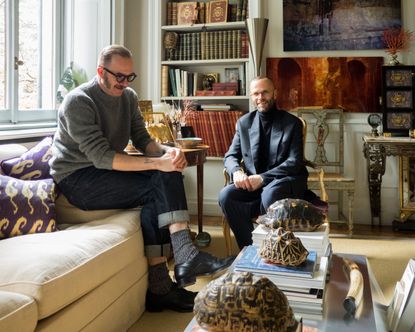
‘The smallest things are always the most precious,’ says Marco Zanini. He is used to thinking big, engineering a string of successful brand relaunches, but in late 2016, Zanini downsized to design for artisanal shoemaker Santoni.
On a sunless winter day, he arrives at Milan’s Casa degli Atellani – a Renaissance-era city landmark where Leonardo lived while painting The Last Supper – and opens the door to the whimsically deco apartment of the late architect Piero Portaluppi, which served as the inspiration for Zanini’s newest collection. Portaluppi was a key figure of early 20th-century Milan, and his style became part of the city’s fabric in buildings such as Palazzo Crespi, Villa Necchi and the Liberty-influenced renovation of Casa degli Atellani.
Zanini, a remarkably tall man, passes through Portaluppi’s foyer, a room frescoed like an arboretum with fan palms, laurel, ivy and cactus, and takes a seat in the living room. ‘Small means precise. Small means agile,’ he continues, bending his knees sharply to perch on a petite ivory couch. ‘Small was the very idea that gave birth to this project.’
The Milan-born designer, formerly creative director of Halston, Rochas and Schiaparelli, and an alumnus of Versace and Dolce & Gabbana, turned his back on Paris and New York for a home-town brand.
At Santoni, Zanini’s purview has been the introduction of a carefully considered handful of designs – the top tier of the company’s footwear offerings, but also its first lines of men’s and women’s apparel, a pared-down capsule collection of timeless wardrobe essentials he calls Edited.
‘The beauty of this project is its reduced dimensions. Being limited in scale makes the work more dynamic and autonomous than at giant corporations,’ he says, rolling his eyes skyward at the thought of past frustrations. ‘Now I’m free of certain deadlines. And I’m not contending with 500 cooks in the kitchen.’
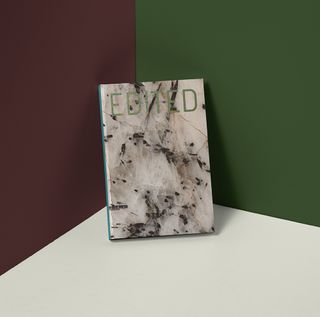
The architect’s home inspired the latest edition of Edited.
‘Less is better,’ agrees Angelo Flaccavento, fashion journalist and Zanini’s collaborator on the Edited project. ‘This project is different,’ he says. At a time when designers complain of the fashion industry’s cyclical strictures and a ceaseless pressure to produce, the limited scale of the Edited collection allows the pair time to contemplate and experiment.
At Santoni, Zanini kicks off each collection not with sketches but with a visual and verbal concept, that becomes a book when the clothing collection is complete. ‘Recounting a collection this way reveals Marco’s ideas in designing it, with his universe of references condensed into a jacket or a dress,’ says Flaccavento. ‘I could never design clothes,’ he continues, ‘but it’s important to have not just a visual person but a verbal person. And to be a curator, or to be a journalist, is the same mindset because the starting point is analysis.’ For Edited Trip, the duo also collaborated wth Marco Cendron, creative director and founder of the Milan-based studio Pomo, who art directed the publication. ‘Today we’re drowning in products that are mostly pointless,’ Flaccavento adds. ‘This project is different.’
The latest outing of Edited has drawn on Portaluppi’s home, and the book features images of his kaleidoscopic marble collection that still lines wood shelves in the living room (the 1,500 little marble slabs, all cut to the same size, were assembled by a young geologist in Rome in the mid-19th century, who trawled the city’s archaeological sites). Architecture lasts. Marble lasts. To relay the story of the clothes with these images is a rejection of today’s over-evanescent fashion world, Zanini argues. The hardbound volume is filled with quasi-psychedelic close-ups of stones: the blood-red veins of a rosy marble and the painterly amber rings of a fossilised wood, interspersed with very occasional coolly moody images of the collection.
It’s understatement as a communication tool, but then Zanini is motivated by rejection as much as creation, having traded glitzier opportunities for the chance to create exactly what he wants: ‘an edit of things that don’t change every six months, designed to accompany the wearer in the long term’, as he explains. There are no extraneous details, no wild cards in this soft-spoken, cerebral collection; only finely wrought basics rendered in his signature subdued palette. In an industry shackled by fast-paced production and almost instant irrelevance, it’s the brave designer who abandons the limelight to create what can endure.
As originally featured in the March 2018 issue of Wallpaper* (W*228)
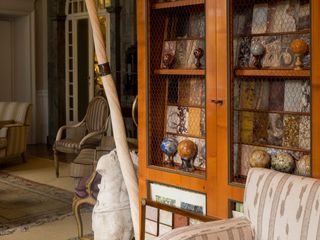
Small marble slabs – trawled from Rome’s key archeological sites – line Portaluppi’s Milan apartment
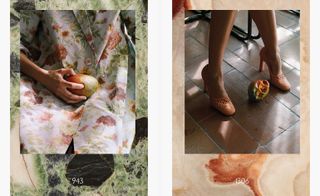
Pages from Edited Trip.
INFORMATION
For more information, visit the Santoni website and the Pomo website
Wallpaper* Newsletter
Receive our daily digest of inspiration, escapism and design stories from around the world direct to your inbox
-
 Ikea introduces its first gaming furniture collection
Ikea introduces its first gaming furniture collectionBrännboll is the first Ikea gaming furniture collection, unveiled during Milan Design Week 2024 and designed to swiftly transform a domestic space into a gamer’s paradise
By Jasper Spires Published
-
 Morgan take their classic roadster and give it subtle but significant tweaks for 2024
Morgan take their classic roadster and give it subtle but significant tweaks for 2024New details and features give the compulsive Morgan Plus Four an even more pared back silhouette and driving ability
By Jonathan Bell Published
-
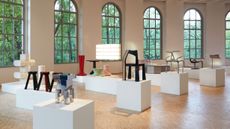 Wallpaper* Class of '24 exhibition now open at Triennale Milano
Wallpaper* Class of '24 exhibition now open at Triennale MilanoWallpaper* Class of '24 exhibition at Triennale spotlights international emerging talent in furniture and product design, with the support of AHEC and SNOW (until 21 April 2024)
By Rosa Bertoli Published
-
 First look at Moncler’s blockbuster new exhibition, which turns Milan Central Station into an immersive public gallery
First look at Moncler’s blockbuster new exhibition, which turns Milan Central Station into an immersive public galleryWallpaper* takes an exclusive look at Moncler’s new Jefferson Hack-curated exhibition, which features portraits of an eclectic cast of international creatives, including artist Daniel Arsham, musician Rina Sawayama and make-up artist Isamaya Ffrench
By Jack Moss Published
-
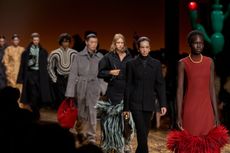 Milan Fashion Week A/W 2024: Giorgio Armani to Bottega Veneta
Milan Fashion Week A/W 2024: Giorgio Armani to Bottega VenetaThe very best of Milan Fashion Week A/W 2024, from Giorgio Armani’s celebration of renewal to the ’monumental everyday’ at Bottega Veneta
By Jack Moss Last updated
-
 Nick Waplington photographs architect Joseph Grima for Stone Island’s ‘research project’
Nick Waplington photographs architect Joseph Grima for Stone Island’s ‘research project’Marking the latest Stone Island Ghost collection, Joseph Grima is photographed by Nick Waplington against the backdrop of Oscar Niemeyer’s 1970s-built Palazzo Mondadori in Milan
By Jack Moss Published
-
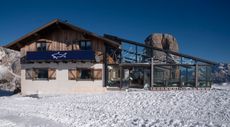 Paul & Shark hits the slopes with a Cortina ski resort takeover
Paul & Shark hits the slopes with a Cortina ski resort takeover‘Paul & Shark takes Cortina’ sees the label take over the Italian ski resort, kitting out the town’s ski club and Scoiattoli chalet
By Tianna Williams Published
-
 Unconventional men’s tailoring to make an impression this winter
Unconventional men’s tailoring to make an impression this winterThis winter’s men’s tailoring is defined by razor-sharp reinterpretations of classic silhouettes, designed to make you stand out over a celebratory season ahead
By Jack Moss Published
-
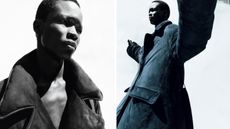 This season, men’s outerwear is defined by bold shapes and seductive textures
This season, men’s outerwear is defined by bold shapes and seductive texturesThe voluminous silhouettes of the season’s finest men’s outerwear, captured in the Wallpaper* September 2023 Style Issue by Umit Savaci and David St John James
By Jack Moss Published
-
 Inside the travelling exhibition celebrating 125 years of luggage brand Rimowa
Inside the travelling exhibition celebrating 125 years of luggage brand RimowaFrom celebrity suitcases to rare special editions, Rimowa’s ‘Seit 1898’ exhibition catalogues over a century of the German luggage brand, making stops in Tokyo, New York, Shanghai and Cologne
By Jack Moss Published
-
 Watch this La Jetée-inspired fashion film by Melanie + Ramon, captured on the streets of Paris
Watch this La Jetée-inspired fashion film by Melanie + Ramon, captured on the streets of ParisTaken alongside the Wallpaper* September 2023 cover shoot, this fashion film by Melanie + Ramon draws inspiration from Chris Marker’s experimental 1962 French science-fiction movie La Jetée
By Jack Moss Published